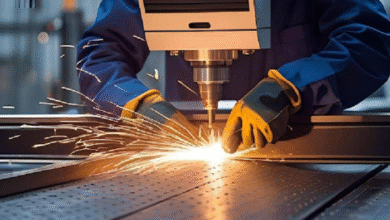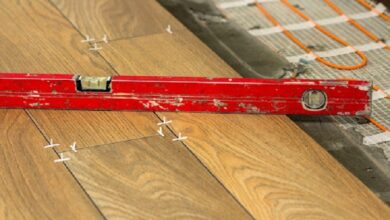Guide to Instant Noodle Production Line

The instant noodle production line embodies a remarkable fusion of culinary art and innovative engineering, presenting a streamlined solution for the mass production of one of the world’s most popular convenience foods. This guide aims to unravel the complexities of the machinery and processes involved, from the initial dough mixing to the final packaging stages. It is designed for manufacturers, engineers, and food technologists seeking to enhance their understanding of the operational intricacies, efficiency optimization techniques, and technological advancements that define modern instant noodle production. Through a detailed exploration of each component and step in the production line, readers will gain valuable insights into how quality, safety, and productivity can be synergistically improved in their manufacturing operations.If you are looking for more information about Loyal Instant Noodle Production Line go here right away
What is an Instant Noodle Production Line?
Understanding the Components of an Instant Noodle Production Line
An instant noodle production line comprises several critical components, each designed to perform specific tasks that collectively contribute to the efficient and high-quality production of instant noodles. Key components include:
- Dough Mixer: The starting point of the noodle-making process, where flour and water are combined to form a consistent dough. Advanced mixers also allow for the integration of additives, such as salts and flavor enhancers, ensuring consistency in taste and texture.
- Rolling and Slitting Machine: This machine takes the dough and rolls it into a thin sheet. It’s then slit into noodle strands of precise width and thickness. Precise control over these parameters is crucial for the quality of the final product.
- Steaming Unit: The noodle strands undergo steaming to gelatinize the starch, a crucial step in developing the noodle’s texture. The duration and temperature of the steaming process are meticulously controlled to achieve the desired noodle quality.
- Cutting and Folding Machine: Post-steaming, the noodles are cut to the desired length and optionally folded or shaped. The accuracy of this component ensures uniformity in the noodle’s appearance.
- Frying or Air-Drying Unit: To prolong shelf life, noodles are either fried in oil or air-dried. Frying gives noodles their distinctive texture and flavor, while air-drying offers a healthier option without the use of additional fats.
- Cooling Unit: After frying or drying, noodles need to be cooled rapidly to ambient temperature to ensure safety and preserve texture before packaging.
- Packaging Machine: The final step, where noodles are packaged in a protective atmosphere to prevent oxidation and extend shelf life. The packaging design is also considered for ease of use and brand recognition.
Key Features of a High-Quality Instant Noodle Production Line
A high-quality instant noodle production line is characterized by several attributes that ensure operational efficiency, product consistency, and safety. These include:
- Automation: The degree of automation within the production line significantly impacts productivity, consistency, and labor costs. Automated systems with programmable logic controllers (PLCs) allow for precise control over each production parameter, reducing human error and enhancing efficiency.
- Flexibility: The ability to adjust production parameters (such as noodle thickness, length, and shape) quickly and conveniently allows for greater product variety and easy adaptation to market trends.
- Hygiene and Safety Standards: High-quality production lines are designed with food safety and worker safety in mind. This includes easy-to-clean and sanitize equipment, food-grade materials, and safety guards to prevent accidents.
- Energy Efficiency: Considering the environmental footprint, energy-efficient models that reduce consumption during steaming, frying, and drying processes are increasingly preferred.
- Durability and Maintenance: Equipment durability, ease of maintenance, and availability of spare parts are crucial for minimizing downtime and maintaining high operational efficiency.
Understanding and investing in a production line that embodies these features is essential for manufacturers aiming to lead in the competitive instant noodle market, ensuring high-quality output that meets consumer expectations while optimizing operational costs.View Loyal for More Details
How does an Instant Noodle Production Line Work?
The Process of Making Instant Noodles Using the Production Line
The instant noodle production line is a marvel of food engineering, designed to transform basic ingredients into the final packaged product through a series of meticulously controlled processes. Initially, the dough is mixed from flour, water, salt, and specific additives to enhance texture and flavor. This dough is then rolled out and cut into noodles of precise thickness and length. Following the cutting process, the noodles undergo steaming, which partially cooks them, ensuring the proper texture and taste. Subsequently, the noodles are either fried or air-dried, a crucial step that dehydrates the noodles for preservation and instant cooking capabilities. Finally, the noodles are cooled, portioned, and packaged with flavoring packets, ready for distribution.
Importance of Quality Control in Instant Noodle Production
Quality control is paramount in instant noodle production, ensuring that every packet meets the stringent standards for taste, texture, safety, and shelf life. This involves rigorous testing of raw materials, continuous monitoring of the production processes, and final product testing. Parameters such as noodle thickness, moisture content, and oil content are meticulously checked. Additionally, quality control measures are applied to the packaging process to prevent contamination and ensure the integrity of the product during transportation and storage.
Optimizing Efficiency in Noodle Making with the Production Line
Optimizing efficiency in the production of instant noodles involves leveraging technology and process improvements to minimize waste, reduce energy consumption, and streamline operations. Advanced automation systems play a key role, enabling precise control over production parameters and reducing manual intervention. Furthermore, implementing continuous improvement strategies, such as Lean manufacturing principles, can identify inefficiencies and implement solutions to enhance productivity. Energy recovery systems, for example, can reuse heat from the frying process to preheat oil or steam, significantly reducing energy demands. Such optimizations not only improve the sustainability of the production process but also contribute to cost savings and increased competitive advantage in the marketplace.
Benefits of Using an Automatic Instant Noodle Making Machine
Advantages of Automation in Instant Noodle Processing
Cost-Effectiveness of Using Automatic Noodle Making Machines
The integration of automatic noodle making machines into instant noodle production lines significantly enhances cost-effectiveness. First and foremost, automation reduces the labor requirement, directly translating to lower labor costs. Furthermore, these machines are designed for high efficiency and consistency, minimizing wastage of raw materials and producing noodles at a faster rate, which increases overall production output. The precision afforded by automation also ensures that each batch of noodles meets quality standards, reducing the need for costly rework or disposal of substandard products. Consequently, the initial investment in automatic machinery often pays off through reduced operational costs and increased productivity, thereby improving the profitability of instant noodle manufacturing. View more to get into the details
Factors to Consider when Choosing an Industrial Instant Noodle Production Line
Comparing Different Suppliers of Instant Noodle Production Lines
When selecting a supplier for instant noodle production lines, it’s essential to conduct a thorough comparison based on several criteria. The reputation of the supplier, the quality and reliability of their machinery, after-sales support, and the technology used are critical factors. A comparison should also include reviewing testimonials from current users of their production lines, assessing the level of customization offered, and the suppliers’ capability to meet specific production requirements.
Price Evaluation for Industrial Instant Noodle Production Lines
Price evaluation plays a crucial role in the decision-making process. It is important to balance cost with quality and service. Cheaper options may lead to higher operating costs in the long run due to inefficiencies, frequent breakdowns, and shorter lifespan of the equipment. Therefore, a comprehensive cost-benefit analysis considering the total cost of ownership, including initial purchase, maintenance, operational costs, and potential downtime, is imperative for making an informed decision.
Features to Look for in an Industrial-Scale Instant Noodle Production Line
The selection of an industrial-scale instant noodle production line should be guided by evaluating key features that contribute to operational efficiency, product quality, and compliance with food safety standards. Important features to consider include:
- The flexibility of the production line to adapt to different noodle types and recipes.
- Energy efficiency and sustainability measures incorporated into the machinery design.
- Automation level and integration capabilities with existing systems to enhance production flow.
- Hygienic design and ease of cleaning to meet stringent food safety regulations.
- Durability and reliability of the equipment to ensure consistent performance and minimize downtime.
- Availability of technical support and spare parts from the supplier to address maintenance needs promptly.
Identifying a production line that aligns with these criteria will significantly contribute to the success and profitability of an instant noodle manufacturing enterprise.




